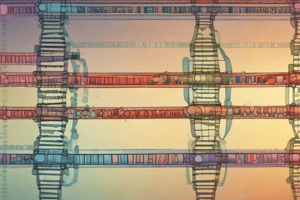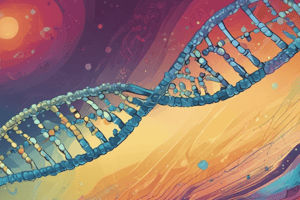Podcast
Questions and Answers
What is the main process used for sequencing the PhiX174 genome?
What is the main process used for sequencing the PhiX174 genome?
- NGS sequencing
- Dideoxynucleotide sequencing
- PacBio sequencing
- Sanger sequencing (correct)
How many genes are actually encoded by the Human genome?
How many genes are actually encoded by the Human genome?
- 109
- 11 (correct)
- 6
- 103
Which sequencing technology is known for its robustness and single-molecule preparation workflow?
Which sequencing technology is known for its robustness and single-molecule preparation workflow?
- PacBio sequencing (correct)
- Nanopore sequencing
- Sanger sequencing
- Illumina sequencing
What was the significant advancement in biomedical research in 2009/10/11?
What was the significant advancement in biomedical research in 2009/10/11?
What is a disadvantage of DNA sequencing using DNA polymerase?
What is a disadvantage of DNA sequencing using DNA polymerase?
Which sequencing technology is known for generating long reads with high accuracy?
Which sequencing technology is known for generating long reads with high accuracy?
Flashcards are hidden until you start studying
Study Notes
Genome Sequencing
- The main process used for sequencing the PhiX174 genome is Sanger sequencing.
Human Genome
- The Human genome encodes approximately 20,000-25,000 protein-coding genes.
Sequencing Technologies
- PacBio sequencing is known for its robustness and single-molecule preparation workflow.
- Oxford Nanopore sequencing is known for generating long reads with high accuracy.
Advances in Biomedical Research
- 2009-2011 saw the significant advancement of completing the 1000 Genomes Project in biomedical research.
Limitations of DNA Sequencing
- A disadvantage of DNA sequencing using DNA polymerase is its tendency to introduce errors during DNA replication.
Studying That Suits You
Use AI to generate personalized quizzes and flashcards to suit your learning preferences.




